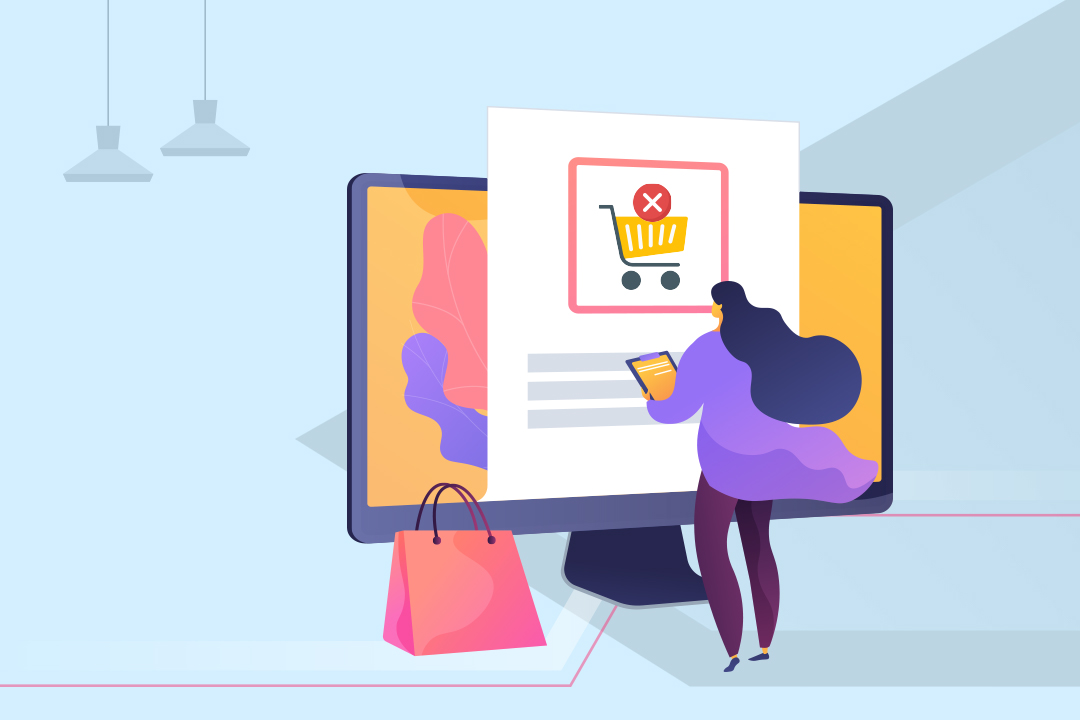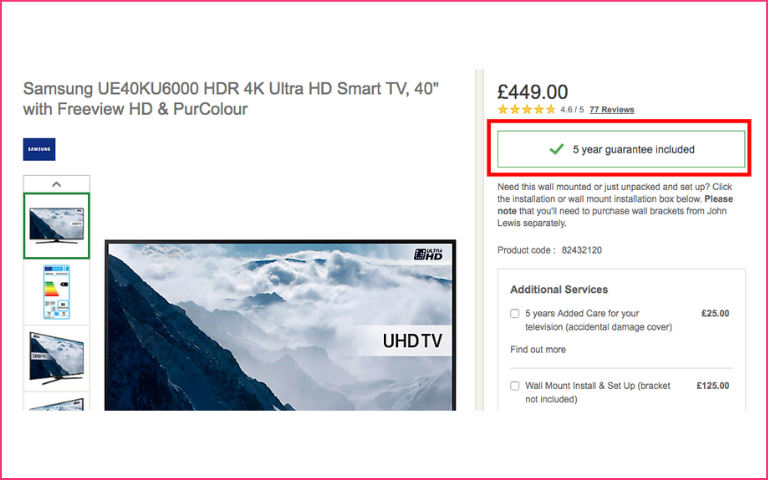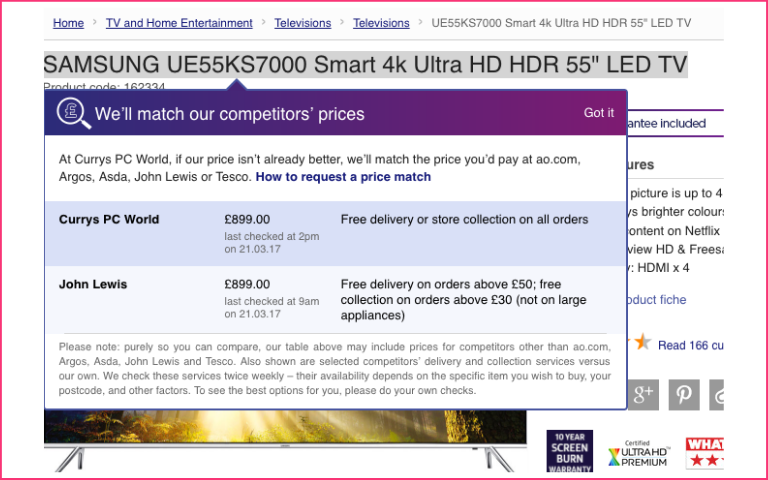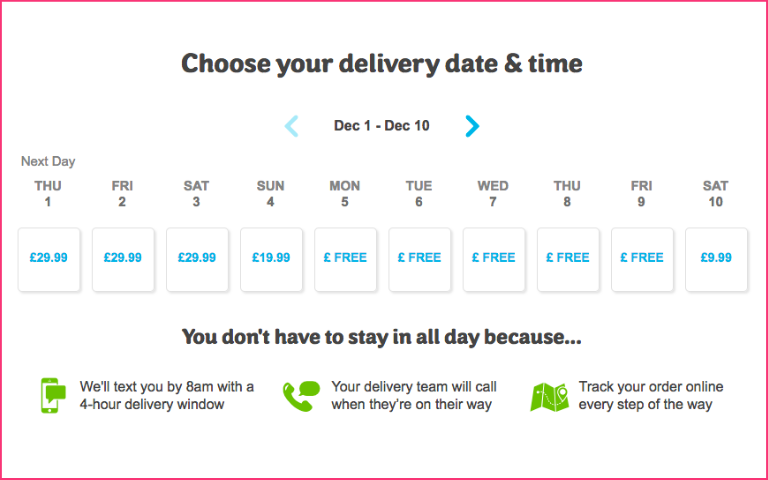One of the biggest reasons eCommerce businesses lose their sleep is shopping cart abandonment. This is a situation where online customers select some products from your catalogue and transfer them to the shopping cart but do not go through the entire checkout process to complete the payment. According to Forrester, every year, eCommerce stores lose about $18 billion in sales revenue due to this tendency.
Are you facing cart abandonments too? Worry not. Below is a complete guide on cart abandonment with statistics, reasons, how to track it, and the ways to reduce it.
Content Index:
- What is Cart Abandonment?
- What is Cart Abandonment Rate?
- Shopping Cart Abandonment Vs. Checkout Abandonment
- Pros and Cons of using Shopping Cart Abandonment Rate?
- Cart Abandonment Rate by Industry/Sector
- Why Do Customers Abandon Carts?
- Ways to Recover or Reduce Cart Abandonment
- How to Avoid Cart Abandonments?
- Ways to Track Cart Abandonment Rate (with tools)
- FAQs
What is Cart Abandonment?
There are several types of abandonment in eCommerce businesses. These include booking abandonment, form abandonment, browse abandonment, and checkout abandonment. Cart abandonment refers to one such action on your shopping website by an online visitor when they abort the purchase of an item listed on your website.
What is Cart Abandonment Rate?
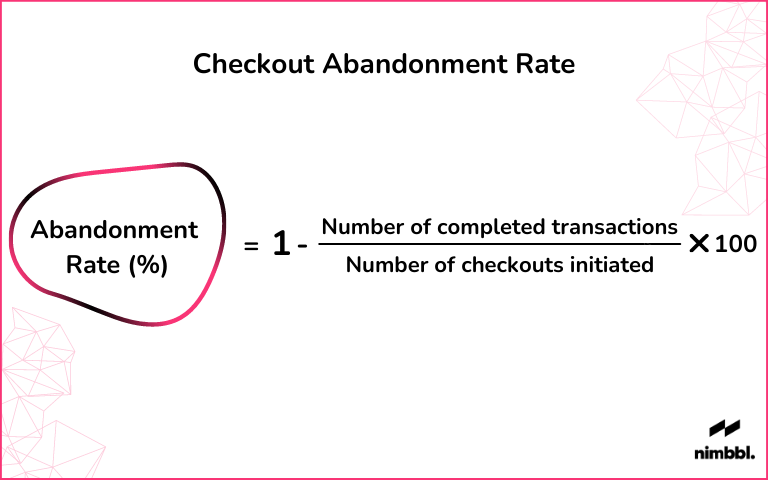
Shopping Cart Abandonment Rate is the percentage (%) of online visitors who add items to their shopping cart but then abandon it without making a purchase. It shows the rate at which your potential customers are leaving without buying.
Shopping Cart Abandonment Vs. Checkout Abandonment
Although factors that affect cart abandonment also impact checkout abandonment, do not confuse them with each other. The main difference between the two is the stage in which the online visitors abandon their purchases. That is, after loading their cart (cart abandonment) or during checkout (checkout abandonment). These differences give rise to metrics to help identify and isolate the ‘when’ and ‘why’ your visitors abandon their cart or the checkout page.
Pros and Cons of using Shopping Cart Abandonment Rate?
Pros: –
- This rate helps you to understand the shopping behaviour of your website’s visitors and customers.
- It indicates how intuitive and trustworthy the checkout process is.
- Tracking the rate provides a specific indication of why revenue from the portal may go up or down.
- It shows if there is a problem converting online visitors to customers.
- Most importantly, it gives out a figure that needs to be addressed to increase revenue.
Cons: –
- The rate can sometimes be misleading. It doesn’t work well if the number of website visitors or sales is small in numbers.
- You must compare it with other KPIs like Gross Profit Margin, Average Order Value, Website Conversion Rate, and Website Speed.
- The rate says something is wrong, and its quantum may increase over time, for which you need to do a thorough investigation.
- Knowing the rate is good for flagging issues, not solving them.
Cart Abandonment Rate by Industry / Sector
Cart abandonment happens for several reasons on an eCommerce website. Its rate varies with the industry/sector.

Why Do Customers Abandon Carts? Explained in Detail
Technical Errors
This is a problem every online shopper faces. Problems like the form not loading, and the inability to fill a form due to its poor design lead to cart abandonment. The rate can be higher if your shopping website is slow or frequently freezes, as it impacts online shoppers’ psychology. The shopper loses confidence, especially when it concerns critical payment screens.
This confusion is best handled by ensuring your website has enough capacity to handle regular volumes of traffic. Take especially into account the spike in traffic during peak shopping days.
Lack of Payment Options
After selecting their items on the website, online shoppers look for multiple payment methods to choose and pay from. A shopping website without multiple convenient payment options witnesses cart abandonment. Also, it is important that payment methods are accessible to shoppers anywhere, especially on mobile.
In the past, the default was to present all payment methods and let the visitor find their preferred method. Now, online shoppers are preferring personalised payment options. UPI, Buy Now Pay Later options are witnessing exponential growth. Offering the latest payment methods in a personalised manner can go a long way in avoiding abandonment.
In the Nimbbl checkout flow, with the help of APIs, every customer is shown personalised payment methods for faster purchases.

In case you are operating in multiple regions, it is important to offer local payment methods. Payment options online shoppers in the US or UK use will differ from those in other countries. Here’s a quick snapshot of the payment method preferences in various regions:
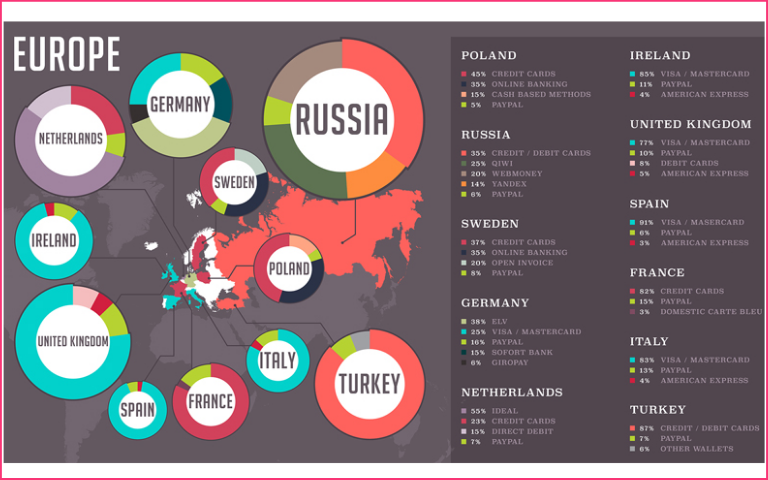
Buying In-Store
The abandonment rate is also very high when online shoppers prefer buying products from physical stores. They sift through online shopping websites to view available options and/or compare them with other online shops. Once they acquaint themselves with options available online, they abandon the cart and buy offline.
However, if your online website has a physical store running alongside, and customers make purchases from that store because they want to touch and feel the product before they buy, this isn’t a problem. This offers cross-selling and up-selling opportunities and allows you to match both online and offline shopping activities.
Shipping Cost and Goods Returns Policies
The insufficient details presented on the website regarding goods delivery/shipping cost and return policies is another reason for abandonment. It may be noted that when shoppers buy from online portals, shipping duration and their costs are big factors for them.
However, many websites only reveal the actual shipping costs at the time of checkout. It means that customers keep on adding items to the shopping cart but are informed of actual costs only at the last stage, i.e. payments. If shoppers feel that the items selected are ultimately beyond their budget, they will abandon their carts.
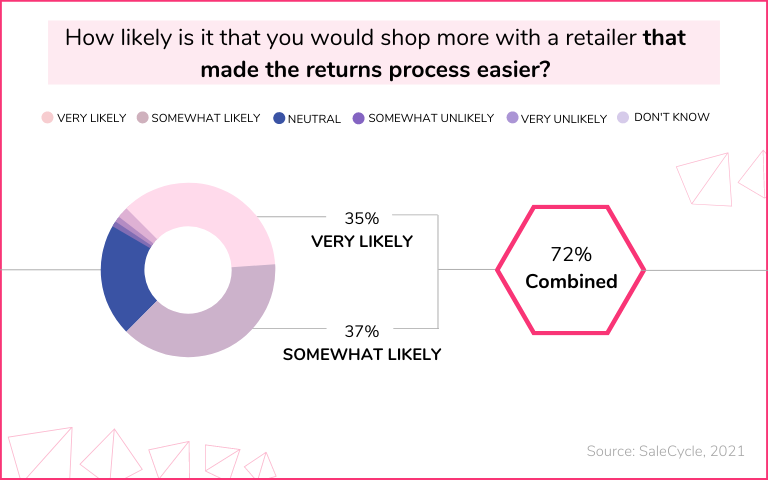
It is best to provide all shipping cost-related information upfront on the product page itself. You can do this by calculating the cost and adding the shipping cost from the source to the destination. This will ensure your visitors don’t get surprised by shipping costs during the checkout.
Apply the same principle to the item returns policy. Knowing your eCommerce website has easy, transparent return policies have a positive psychological impact on online shoppers. This will enable shoppers to buy from you, knowing fully well that if they don’t like an item upon delivery, they can return it.
Price Comparisons
Another reason that pushes up cart abandonment rates is the browsing habits of online shoppers. Usually, they visit an eCommerce site to find out about the item and the best price for which it is available. After finding out the details, they abandon the cart and jump to other eCommerce sites to compare the prices.
It’s a catch-22 situation. In their attempt to grab customers, some eCommerce businesses may lower their prices, but it will affect their profitability. Instead, try improving the overall customer experience with chatbots, emailers, and easy website design. Offer some items for free when sales reach a certain limit. You are then likely to grab customers and even retain them in the future.
Some eCommerce players have become creative in their attempts to grab customer attention. One example: offering price comparisons of items on their website with other websites.
Lack of Trust
Like in any business, trust is very important in eCommerce. If online visitors have any reason to suspect a website, be it a virus attack, hacking, slow performance, etc., they are highly unlikely to enter their payment details on that website. How online shoppers come to trust a portal or are reassured about it depends on several factors like:
- Knowledge about the brand
- Smooth website performance
- Clear website design with shipping policies
- Testimonials and reviews from past customers
- Customer service links and clear contact details
- Security logos and trust seals
Long and Complicated Checkouts
As per the general rule, unless the product offered is complex (such as holidays with various facilities), the checkout process shouldn’t be too hard for online shoppers. The website should make the checkout process easy to understand and short. Each form field must be well explained for the benefit of the user.
Shortcuts that reduce customer effort greatly improve the checkout process. Tools that predict customers’ delivery addresses make the filling process faster.
Fast payment methods like UPI, Buy Now Pay Later with a 1-Click Checkout experience help customers to complete payments quickly. They need not spend time finding and entering card/net banking details. The payment success rates are also higher than the traditional payment methods.
Register before Checkout
Needing to register before checkout is a key reason behind rising abandonment rates. This is an extra step that prompts online users to abandon carts on online shopping portals. Online portals can reduce these rates by offering a guest checkout option or passwordless login for payments with Nimbbl.
With Nimbbl checkout, customers are shown personalised payment options without having to log in! All details are fetched from the eCommerce site and displayed on the payment page. You can go through the demo of the Nimbbl checkout experience here – https://shop.nimbbl.tech/
Just Looking
Another reason behind cart abandonment is the window-shopping habit of online customers. Some online customers are just not interested in buying from a portal. Most of the time, they browse, add items to the cart, check prices, and then simply choose to abandon the carts. A big reason given by online shoppers to abandon carts is spending more research time on products.
To avoid this, offer visitors help with their research on your website. That way, you can keep them on the portal for a much longer time. This may often positively impact the online shopper’s psychology. It may ultimately prompt them to change their minds and buy from your portal.
Another way to entice online shoppers is to display product ratings and customer reviews alongside the products on the webpage in an easily visible manner. This helps customers get unbiased information on product performance and features.
Ways to Recover or Reduce Cart Abandonment
Abandoned Cart Emails
If the visitor entered their email ID during the checkout process before dropping out, it is a good opportunity for sending them cart abandonment emails. You can send a lucrative offer or coupon code to entice the online user to re-login to the website and make relevant purchases.
Abandoned Cart Emails Explained
You can run a sustained email campaign to motivate your customers to return to your website and buy. This way, you will be able to recover abandoned carts and retrieve your lost potential revenue. The prerequisite for that is:
- Visitors should have added items to their shopping carts and abandoned them.
- The visitor should have provided an email address.
Here are some ways to capture more email addresses during the shopping process:
- Improving checkout form
- Using exit-intent pop-ups
- Using the triggered email booster feature
Pointers to Keep in Mind for Cart Abandonment Recovery Emails
1. Stick to Brand’s Voice: Maintain a line consistent with brand image. This makes it attractive to potential customers.
2. Tone: The tone should be akin to customer service – helpful and concerned – explaining “how can we help”.
3. Clarity: The emails should be clear and to the point, enticing the shopper to return to the portal.
4. Consistent Analysis: Analyse performance throughout this email campaign. It is warranted to find the best approach to lure back customers.
5. Know your Audience: It is important to know who you are emailing. What sort of relationship do they have with your portal, or what sort do you want?
6. Write a Compelling Subject Line: The email’s subject line is the first thing that catches the recipient’s eye. Make it intriguing and tight.
7. KISS: Keep it short and sweet. Short, concise emails work, while long-winded emails derail the effort.
8. Don’t Spam: Choose words mindfully and avoid unnecessary alerts.
9. List Items: When sending an email, try listing the items selected by online visitors before they abandoned their carts.
10. Add Call-To-Action (CTA): Don’t expect email readers to know what to do. To recover abandoned carts, include a CTA link to the portal checkout page alongside clear instructions.
11. Offer Incentives: Are high prices or total shipping costs the reason for abandonment? Then, offer incentives in the form of a discount.
Abandoned Cart Retargeting
Abandoned cart retargeting is a great way shopping websites can execute abandoned cart recovery. This retargeting can be done by placing an ad pixel on the checkout page. Websites can then use the ad pixel for remarketing their shopping cart to users who logged out without making any purchases.
You can do remarketing for your online portal on the leading ad platforms like Facebook and Google. Retargeting works even if the users didn’t enter their email IDs. You can run ads regularly to ensure top-of-mind recall and get revisits while visitors are browsing the web.
How to Avoid Cart Abandonments?
1. You must be aware of the reasons for shopping cart abandonment and devise the most effective solution to avoid it.
2. You need to rigorously review your online shopping portal’s website functioning. Make relevant changes to the page(s) to ensure smooth functioning and prevent abandonment.
3. Optimise online customers’ overall shopping and checkout experience to avoid abandonment.
Ways to Track Cart Abandonment Rate
Keeping track of cart abandonment rates helps online shopping portals review and make relevant changes. Most often, using Google Analytics is the best way to automatically calculate and track these rates. As the reasons behind cart abandonment vary from industry to industry, tracking it can help boost revenues and even help curtail it.
For WordPress sites, plugins like ExactMetrics can be installed and used. Here are the steps:
Step 1: Download and Install ExactMetrics
Upload the ExactMetrics setup file on your WordPress website and install and activate ExactMetrics.

Step 2. Connect Google Analytics using ExactMetrics
Once ExactMetrics is activated, add the Google Analytics tracking code. Using ExactMetrics as the setup wizard adds the Google Analytics tracking code instantly.

Step 3: Install ExactMetrics eCommerce Add-on
Once the ExactMetrics eCommerce plugin is added, just log in to ExactMetrics’ Add-Ons and navigate the eCommerce website. Once installed, the addon is activated automatically.

Step 4: Allow Enhanced Ecommerce with Google Analytics
Login to your Google Analytics account, go to Admin settings, and then to eCommerce settings under the View column.
Next, toggle and switch on to enable eCommerce and enhanced eCommerce reporting options and save.



Step 5: Use Enhanced eCommerce in ExactMetrics
Now that both ExactMetrics and Google Analytics are enabled, log in to WordPress admin and navigate to ExactMetrics > Settings > eCommerce.
Under eCommerce tracking settings, ensure enhanced eCommerce options are enabled.
Then run it to track and monitor the cart abandonment rate of your online shopping store.

Step 6: View Cart Abandonment Report
To view the report, log in to the associated Google Analytics account.
Then move to Conversions > eCommerce > Shopping Behaviour to view the abandonment rate and figure out how many online shoppers abandon their carts.


Switch to Nimbbl
Shopping cart abandonment and its rate can tell you about the problems you are facing with your website and what issues must be addressed to fix the same. It also tells you how much potential business you are losing per year as a result. It is important that you know exactly what remedial measures to take to avoid it, and if it still happens, how to recover it.
Nimbbl focuses on growing your business with a 1-Click checkout experience. eCommerce businesses have seen a drastic reduction in payment failures and cart abandonment with the Nimbbl checkout. Moreover, it gives you access to leading Buy Now Pay Later, UPI apps and a simple pre-built integration solution with multiple payment aggregators.

FAQs
It is a situation when a visitor filled up the items in the shopping cart but abandoned them without completing the purchase.
It is the ratio of the number of abandoned shopping carts to the number of shopping carts that were converted to a purchase.
As per the latest reports, the average shopping cart abandonment rate was 71% in 2021.
It is an effect of poor customer experience leading to wastage of marketing money, and negative word of mouth, ultimately causing a loss of potential revenue.
A fast and personalised checkout experience with minimum barriers such as form fields, OTPs, and logins can help you to convert more visitors into customers.

